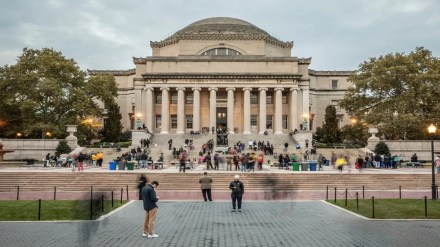Many overseas students’ dreams of studying in the United States, obtaining an H-1B visa, and applying for a green card to eventually become Americans may have just been dashed.
President Trump issued a proclamation last week imposing a $100,000 tax on companies that file H-1B petitions on behalf of foreign workers. The $100,000 H-1B fee will be levied for the first time during the H-1B visa season FY 2027.
H-1B visa costs will essentially rise for US employers hiring overseas workers. And, they will most likely consider paying the fee for hiring the best of global talent and not those who are eligible for low-paying, low-skilled jobs.
The implementation of a $100,000 H-1B fee has altered the equation not just for US companies and foreign workers, but it will also have an impact on the appeal of the United States as the most chosen study abroad destination for international students and parents.
From Studying to Citizenship Pathway
For many overseas students pursuing a master’s or bachelor’s degree, the next step is to get US work experience through OPT programs. As a result, students can request a change of status to an H-1B visa if a US firm is willing to hire them.
This allows them to remain in the United States and continue working in their field of study, as long as they meet the H-1B eligibility and their employer files the petition on their behalf.
What Foreign Students Can Do Now
Trump’s proclamation aims to ensure that US companies retain only the best talent in the field of education and the workplace. Parents and students will have to rethink their strategy of studying and settling in the US after all the measures taken by the Trump administration.
Aman Singh, Co-Founder, GradRight says, “President Trump’s announcement of a $100,000 fee on H-1B visas has understandably drawn attention from Indian students and parents, raising questions about the ROI of a U.S. degree.
It is important to clarify that this policy is aimed at employers, not students directly. While higher costs may lead some companies to be more selective in sponsoring international graduates, the broader impact will unfold over time, depending on details, exemptions, and potential legal challenges.”
As of now, the $100,000 fee on H-1B visas is for 12 months and could be renewed based on the feedback received by US agencies.
Piyush Kumar, Regional Director, South Asia, Canada and Latin America (LATAM), IDP Education, says, “The recent announcement has understandably raised some concerns from students and parents.
However, it is still too early to gauge the long-term impact on Indian students wanting to study in the US.
It is important to know that the students who are pursuing a U.S. education at the moment will look at H-1B pathways typically a few years down the line, while this proclamation has been proposed for the next 12 months only as of now.”
For US studies, the Spring 2026 semester begins in January 2026, and applicants must apply now. Applications for the Fall 2026 intake are open until November 2025 and will close early next year.
Ankit Mehra, Co-founder & CEO, GyanDhan has a clear strategy in place: If working in the US is central to your study abroad plans, consider deferring if you are considering the Spring 2026 semester. The policy environment is volatile and clarity may emerge only after legal pushback.
For Fall 2026, you may proceed with your applications, but build a Plan B in other countries. Courts have historically overturned restrictive executive orders, but repeated policy efforts
could bring structural changes to the system.
ROI on US Education
The cost of studying in the United States is rather high compared to other countries. However, starting salaries in the United States allow students to recoup their investments more quickly.
The average H-1B salary is $120,000, but now the $100,000 fee on petitioning for an H-1B visa will likely put the brakes on overseas hirings.
Shantanu Gangal, Co-founder and CEO of Prodigal — a Silicon Valley startup building AI agents for debt collections, says, “The $100,000 fee on H-1B visas makes the traditional pathway of pursuing an MBA or master’s in the U.S. much harder to justify. For many students, the return on investment won’t add up when sponsorships become more selective and debt levels remain high.”
Impact
During the Trump administration, several strict measures have been implemented regarding student visas, including the revocation of F-1 study visas, the removal of SEVIS status, and the tightening of the student visa appointment process. The duration of stay rule allowing students to remain in America after studies has also been modified. The OPT rules changes are also proposed to be changed.
Col Sanjeev Govila (retd), Certified Financial Planner, CEO, Hum Fauji Initiatives, a financial advisory firm, says, “Trump’s presidency is just 8 months old with 40 more months to go, which may see many other severe disruption add-ons on top of this one. It may not be worth it to cling to dreams of a make-believe world and waste own life waiting.”
H-1B visas are a popular option for Indians looking to settle in America with a green card and obtain US citizenship. Andri Boiko, founder &CEO of Garant IN, says, “With Indians making up more than 70% of all H-1B visa holders, this sudden hike to a $100,000 annual fee is not just a bureaucratic hurdle—it directly threatens the livelihood of thousands of skilled Indian workers and disrupts global operations for both Indian and multinational companies.”
What’s Ahead
The writing is on the wall. The international students are not welcome in the present scheme of things of the Trump administration. So, students should assess their skills and the evolving dynamics of US immigration to make informed career decisions.
